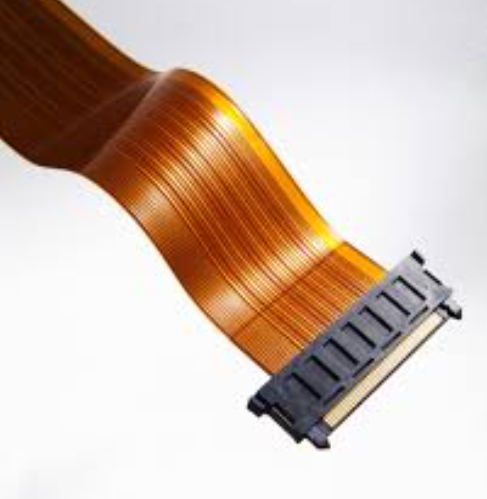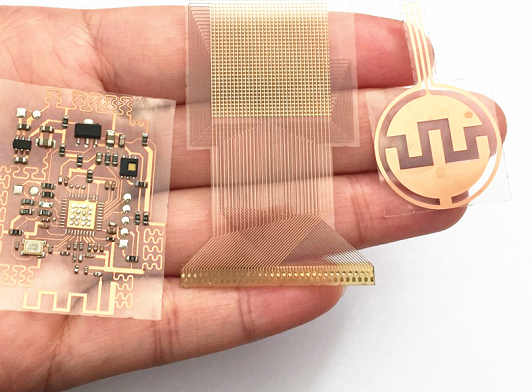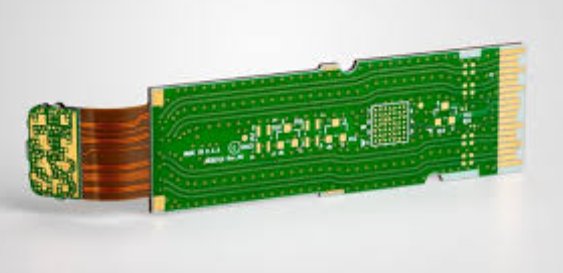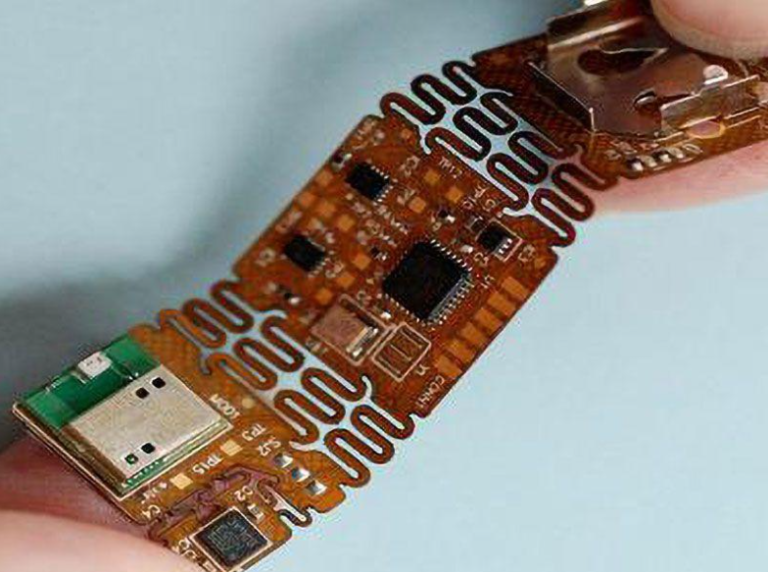flex and rigid flex pcb
Advantages Of Using Flex and rigid flex pcb In Modern Electronics
Flex and rigid-flex pcb printed circuit boards (PCBs) have become increasingly integral to the development of modern electronics, offering a range of advantages that cater to the evolving demands of contemporary technology.
One of the primary benefits of flex PCBs is their ability to conform to various shapes and contours,
which is particularly advantageous in applications where space is at a premium. This flexibility allows for more innovative and compact designs, enabling engineers to create devices that are not only smaller but also more efficient.
Moreover, flex PCBs are known for their durability and reliability.
The materials used in their construction, such as polyimide or polyester films, provide excellent resistance to environmental factors like heat, moisture, and chemicals. This makes them ideal for use in harsh conditions, where traditional rigid PCBs might fail. Additionally, the inherent flexibility of these boards reduces the risk of damage due to mechanical stress, which can be a significant concern in applications involving constant movement or vibration.
Another significant advantage of flex PCBs is their ability to reduce the overall weight of electronic devices.
By eliminating the need for multiple connectors and interconnecting wires, flex PCBs streamline the design, resulting in lighter and more portable products. This is particularly beneficial in industries such as aerospace, automotive, and consumer electronics, where weight reduction is a critical factor in enhancing performance and efficiency.
Furthermore, the use of flex PCBs can lead to cost savings in both manufacturing and assembly processes.
The reduction in the number of components and connectors not only simplifies the assembly process but also decreases the likelihood of assembly errors. This, in turn, leads to higher yields and lower production costs. Additionally, the ability to fold and bend flex PCBs allows for more efficient use of space within a device, potentially reducing the overall size and cost of the final product.
In addition to these practical benefits, flex PCBs also offer superior electrical performance.
The shorter and more direct routing of electrical paths minimizes signal loss and electromagnetic interference, resulting in improved signal integrity and overall device performance. This is particularly important in high-frequency applications, where maintaining signal quality is crucial.
The integration of rigid-flex PCBs further enhances these advantages by combining the best of both worlds: the flexibility of flex circuits and the robustness of rigid boards. This hybrid approach allows for even more complex and reliable designs, accommodating a wider range of applications. For instance, rigid-flex PCBs are often used in medical devices, where reliability and precision are paramount, as well as in military and aerospace applications, where durability and performance are critical.
In conclusion, the advantages of using flex and rigid-flex PCBs in modern electronics are manifold. Their flexibility, durability, and ability to reduce weight and cost make them an attractive option for a wide range of applications. Moreover, their superior electrical performance and the potential for innovative design solutions further underscore their importance in the ever-evolving landscape of electronic technology. As the demand for smaller, more efficient, and more reliable devices continues to grow, the role of flex and rigid-flex PCBs is likely to become even more significant, driving advancements and shaping the future of modern electronics.

Design Considerations For Rigid-Flex PCBs
Designing rigid-flex PCBs requires a comprehensive understanding of both rigid and flexible circuit board technologies. These hybrid boards combine the best of both worlds, offering the mechanical stability of rigid PCBs and the adaptability of flexible circuits. However, the integration of these two distinct technologies necessitates meticulous planning and consideration of several critical factors to ensure optimal performance and reliability.
One of the primary considerations in designing rigid-flex PCBs is the selection of materials.
The materials used in the flexible sections must be compatible with those in the rigid sections to prevent delamination and other mechanical failures. Polyimide is commonly used for the flexible layers due to its excellent thermal stability and flexibility, while FR4 is typically used for the rigid sections. The adhesive materials that bond these layers must also be carefully chosen to withstand the thermal and mechanical stresses encountered during both manufacturing and operation.
Another crucial aspect is the layer stack-up configuration.
The stack-up must be designed to balance the mechanical and electrical requirements of the application. For instance, the number of layers in the flexible section should be minimized to maintain flexibility, while the rigid sections can accommodate more layers to support complex circuitry. Additionally, the transition zones between rigid and flexible sections must be carefully designed to avoid stress concentration, which can lead to mechanical failure. This often involves using gradual transitions and avoiding sharp bends in the flexible sections.
Thermal management is another key consideration.
Rigid-flex PCBs are often used in applications with stringent thermal requirements, such as aerospace and medical devices. The design must ensure efficient heat dissipation to prevent overheating and ensure long-term reliability. This can be achieved through the use of thermal vias, heat sinks, and careful placement of heat-generating components. The thermal expansion coefficients of the materials used must also be matched to prevent warping and other thermal-induced stresses.
Signal integrity is equally important in rigid-flex PCB design.
The flexible sections can introduce signal integrity issues due to their varying impedance characteristics. To mitigate this, designers must carefully control the impedance of the traces in the flexible sections, often by using controlled impedance traces and maintaining consistent trace widths and spacing. Additionally, the use of ground planes and proper shielding can help minimize electromagnetic interference (EMI) and ensure signal integrity.
Manufacturability is another critical factor.
The design must be optimized for the manufacturing processes used to produce rigid-flex PCBs. This includes considering the limitations of the fabrication equipment, such as minimum trace widths, spacing, and hole sizes. The design should also account for the assembly process, including the placement and soldering of components. Flexibility in the design can be achieved by incorporating test points and designing for ease of assembly and testing.
Finally, reliability and durability must be considered.
Rigid-flex PCBs are often used in harsh environments where they are subjected to mechanical stress, vibration, and temperature extremes. The design must ensure that the PCB can withstand these conditions without failure. This involves rigorous testing and validation, including thermal cycling, vibration testing, and mechanical stress testing.
In conclusion, designing rigid-flex PCBs is a complex process that requires careful consideration of materials, layer stack-up, thermal management, signal integrity, manufacturability, and reliability. By addressing these factors, designers can create robust and reliable rigid-flex PCBs that meet the demanding requirements of modern electronic applications.

Applications Of Rigid-Flex PCBs In The Medical Industry
Rigid-flex printed circuit boards (PCBs) have become increasingly significant in the medical industry due to their unique combination of flexibility and durability. These PCBs integrate the benefits of both rigid and flexible circuits, making them ideal for a variety of medical applications. As the medical field continues to advance, the demand for more compact, reliable, and efficient electronic devices grows, and rigid-flex PCBs are at the forefront of meeting these needs.
One of the primary applications of rigid-flex PCBs in the medical industry is in diagnostic imaging equipment.
Devices such as MRI machines, CT scanners, and ultrasound systems require highly reliable and precise electronic components to function accurately. Rigid-flex PCBs provide the necessary stability and flexibility, allowing for the intricate designs needed in these complex machines. Their ability to withstand harsh environments and repeated flexing without compromising performance makes them indispensable in ensuring the accuracy and longevity of diagnostic equipment.
Moreover, rigid-flex PCBs are crucial in the development of wearable medical devices.
These devices, which include heart rate monitors, glucose monitors, and other health tracking gadgets, demand lightweight and flexible components that can conform to the human body. Rigid-flex PCBs offer the perfect solution by combining the rigidity needed for mounting electronic components with the flexibility required for comfortable wear. This combination enhances the user experience and ensures that the devices can be worn for extended periods without causing discomfort.
In addition to wearable devices, rigid-flex PCBs are also used in implantable medical devices.
Pacemakers, cochlear implants, and neurostimulators are examples of life-saving technologies that rely on the reliability and compactness of rigid-flex PCBs. These devices must operate flawlessly within the human body, often for many years, without the possibility of failure. The robust nature of rigid-flex PCBs ensures that these critical devices can perform their functions reliably, providing patients with improved quality of life and, in many cases, saving lives.
Furthermore, the miniaturization of medical devices has been greatly facilitated by the use of rigid-flex PCBs.
As medical technology advances, there is a continuous push towards smaller, more efficient devices that can perform complex functions. Rigid-flex PCBs allow for the design of compact and lightweight devices without sacrificing performance or reliability. This miniaturization is particularly important in applications such as endoscopic tools and minimally invasive surgical instruments, where space is at a premium, and precision is paramount.
Another significant application of rigid-flex PCBs in the medical industry is in patient monitoring systems.
These systems, which include devices like portable ECG monitors and blood pressure monitors, require reliable and durable electronic components to ensure accurate and continuous monitoring of patients’ vital signs. Rigid-flex PCBs provide the necessary durability and flexibility, allowing these devices to be used in various settings, from hospitals to home care environments.
In conclusion, the applications of rigid-flex PCBs in the medical industry are vast and varied. Their unique combination of flexibility and durability makes them ideal for use in diagnostic imaging equipment, wearable and implantable medical devices, miniaturized medical tools, and patient monitoring systems. As medical technology continues to evolve, the role of rigid-flex PCBs will undoubtedly expand, driving further innovations and improvements in patient care.
Cost-Effective Manufacturing Techniques For Flex And Rigid-Flex PCBs
Flex and rigid-flex printed circuit boards (PCBs) have become increasingly popular in various industries due to their versatility, durability, and space-saving capabilities. As demand for these advanced PCBs grows, manufacturers are continually seeking cost-effective techniques to produce them without compromising quality.
One of the primary methods to achieve cost efficiency in manufacturing flex and rigid-flex PCBs is through the optimization of material usage.
By carefully selecting materials that offer the best balance between performance and cost, manufacturers can significantly reduce expenses. For instance, using polyimide films, which provide excellent thermal stability and flexibility, can be more cost-effective than other high-performance materials. Additionally, manufacturers can minimize waste by precisely cutting and layering these materials to fit the specific design requirements of each PCB.
Another crucial aspect of cost-effective manufacturing is the implementation of advanced fabrication technologies.
Techniques such as laser direct imaging (LDI) and automated optical inspection (AOI) have revolutionized the production process. LDI allows for precise patterning of the circuit, reducing the need for costly masks and improving overall accuracy. AOI, on the other hand, ensures that any defects are identified and corrected early in the production process, thereby reducing the likelihood of costly rework or scrap. Furthermore, the use of automated equipment for drilling, plating, and assembly can significantly reduce labor costs and increase production speed.
In addition to material optimization and advanced fabrication technologies, design for manufacturability (DFM) principles play a vital role in cost-effective production.
By designing PCBs with manufacturing constraints in mind, engineers can simplify the production process and reduce the likelihood of errors. For example, minimizing the number of layers in a rigid-flex PCB can lower material and processing costs. Similarly, designing with standard panel sizes and shapes can maximize material utilization and reduce waste. Collaboration between design and manufacturing teams is essential to ensure that the PCB design is both functional and cost-efficient.
Moreover, economies of scale can greatly impact the cost-effectiveness of flex and rigid-flex PCB manufacturing.
By producing larger quantities of PCBs, manufacturers can spread fixed costs, such as setup and tooling, over a greater number of units, thereby reducing the cost per unit. This approach is particularly beneficial for high-volume production runs, where the initial investment in equipment and materials can be amortized over a large number of PCBs. However, even for smaller production runs, manufacturers can achieve cost savings by standardizing processes and materials across different projects.
Lastly, continuous improvement and innovation are key to maintaining cost-effectiveness in the long term.
By regularly reviewing and refining manufacturing processes, manufacturers can identify areas for improvement and implement new technologies and techniques that enhance efficiency. For instance, adopting environmentally friendly practices, such as recycling materials and reducing energy consumption, can not only lower costs but also align with sustainability goals. Additionally, investing in research and development can lead to the discovery of new materials and methods that further drive down costs while maintaining or improving performance.
In conclusion, cost-effective manufacturing of flex and rigid-flex PCBs involves a multifaceted approach that includes optimizing material usage, leveraging advanced fabrication technologies, adhering to design for manufacturability principles, capitalizing on economies of scale, and committing to continuous improvement. By integrating these strategies, manufacturers can produce high-quality PCBs that meet the demands of various industries while keeping costs under control.







